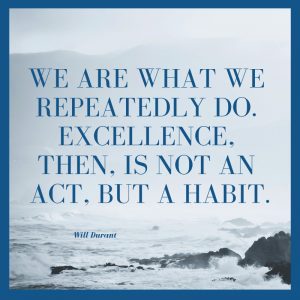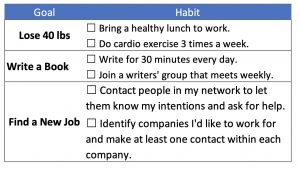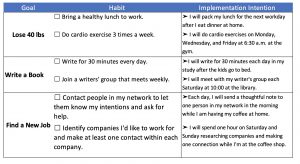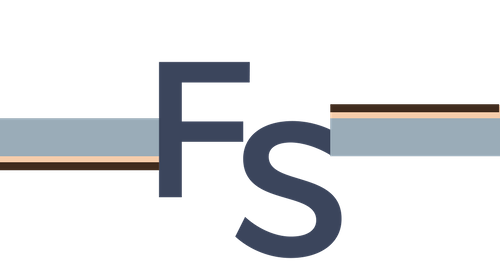Why is it that 80% of us give up on our New Year’s goals by the first week in February? The problem isn’t us, it’s the way we approach these goals.
The problem with how we approach our big goals is that we focus on the goal itself rather than the small, daily habits we must master to achieve the goal.
In my three-part series, I’ll share with you the most eye-opening insights I found in James Clear’s book, Atomic Habits: Tiny Changes, Remarkable Results. There’s a reason this New York Times bestseller is topping the charts on Amazon. It’s undeniably the best book I’ve read on habits and I’ve developed quite the habit of reading habit books!
I give Atomic Habits a rare, “must read” rating, and I’ll share the strategies I found incredibly useful.
Let’s start with how to leverage these two truths:
- Habits are essential to achieving any big, meaningful goal.
- Small but intentional habits can have a profound impact on our lives.
Habits Are Everything
First, let’s break down the notion that we should be focusing more on habits than goals.

Not many would debate this point. We are our habits. Achieving our goals is a result of having the right daily and weekly habits.
Cause (Habit) = Effect (Goal)
What should we be laser-focused on each day, the result of our efforts (the goal) or the key practices (the habits) that propel us to achieve our goal?
The habit is the cause and that’s what deserves our full attention.
When setting New Year’s goals, most of what we consider is the goal and not the habits we must master to reach those goals. Here are a few examples of typical New Year’s goals:
- Lose 40 lbs
- Write a book
- Find a new job.
While those are great overarching goals, they are far too broad to tackle on a daily basis. No wonder we give up on our New Year’s goals by February if we wake up in the morning under the weight of knowing our measure of success is losing 40 lbs, or writing a book or finding a new job!
Small But Intentional
Next, let’s take those three New Year’s goals from the previous example and apply this thinking in a three-step process.
Step 1. Identify the Habits. For each New Year’s goal, ask yourself, “What are the essential few habits I must create over the next 30 days to get me closer to achieving this goal?” There are a lot of things you could do, but there are always the critical few that will have the most impact. That’s what we’re after!
Here are a few possibilities using the example goals from above:

![]()
Why only 30 days?
Dream big, but act small. It’s overwhelming to think of all the things you will ultimately need to do to achieve a meaningful goal. So don’t! The only thing that matters is what’s right in front of you, so don’t cloud your thoughts with the weight of what you’ll need to do later. Only tackle it 30 days at a time.
Step 2: Set Implementation Intentions. According to James Clear, “you are two to three times more likely to follow through with a habit if you make a specific plan for when, where and how you are going to implement it”. Use the following framework to build a very specific intention:
I will _______(action) at ________(time) in ________(location).
Using the same three example goals, the implementation intentions might look something like this:

![]()
Tip:
It’s tremendously helpful to combine a new habit with a well-established habit. So if you have a long habit of going to Caribou for coffee on Saturday and Sunday mornings, then combine that with another habit you are trying to establish, like writing.
Step 3: Measure What Matters. Track your progress! What gets measured gets done, as the saying goes, and it really does feel good to check the box on a commitment you’ve made to yourself. There’s no best way to do this other than to say make sure you make it easy to do and easy to see. I’m tracking my habit progression on a spreadsheet on Dropbox. It makes it really easy to pull up the spreadsheet on my phone before I get ready for bed. You can download my template tracker below but whatever works for you is what works!
![]()
Bonus: For added incentive, identify a reward you will give yourself for achieving your 30-day habit goals. Even a small reward will give you a boost of motivation when you need it. And don’t fall into the trap of “the habit is its own reward”. That may be true, but the idea of a new pair of
FREE DOWNLOAD
Make it easy on yourself! Download my Habit Tracker Template.

Idea into Action
Revisit your New Year’s goals and identify the one that is most important to you. Download my template and take that goal through the 3-step process of habit identification, implementation intention, and measurement.
Commit to those habits for the next 30 days, measure your progress and be sure to reward yourself for achieving your habit goal.
At the end of the 30 days, review to determine which habits you want to continue, modify or add to get you closer to reaching that New Year’s goal.
In my next post in this Atomic Habits series, we’ll examine the “Northstar” of habit formation, identity-changing habits.
Until then, you can leverage the small but powerful habits to finally attain those truly meaningful goals!
Work well,


